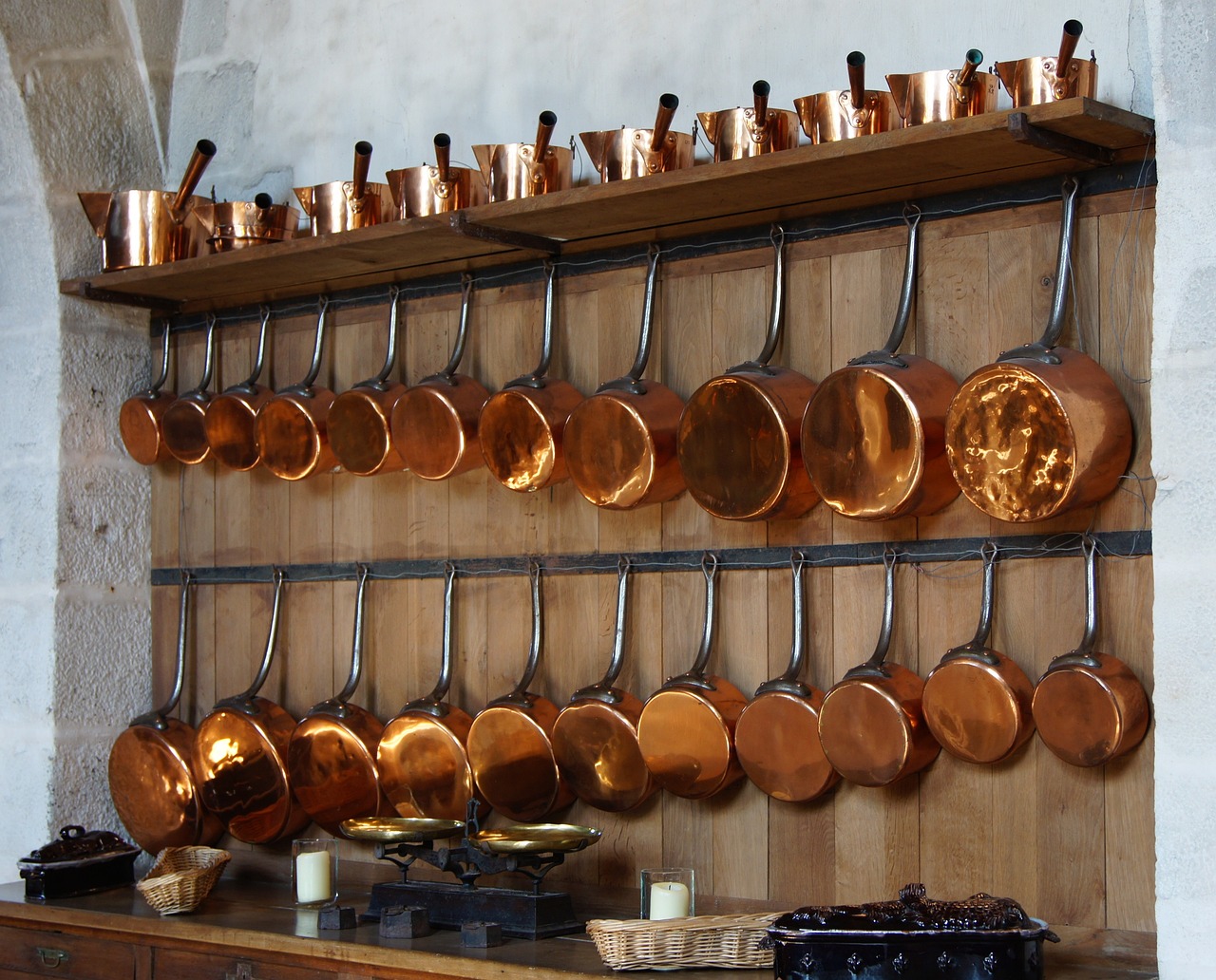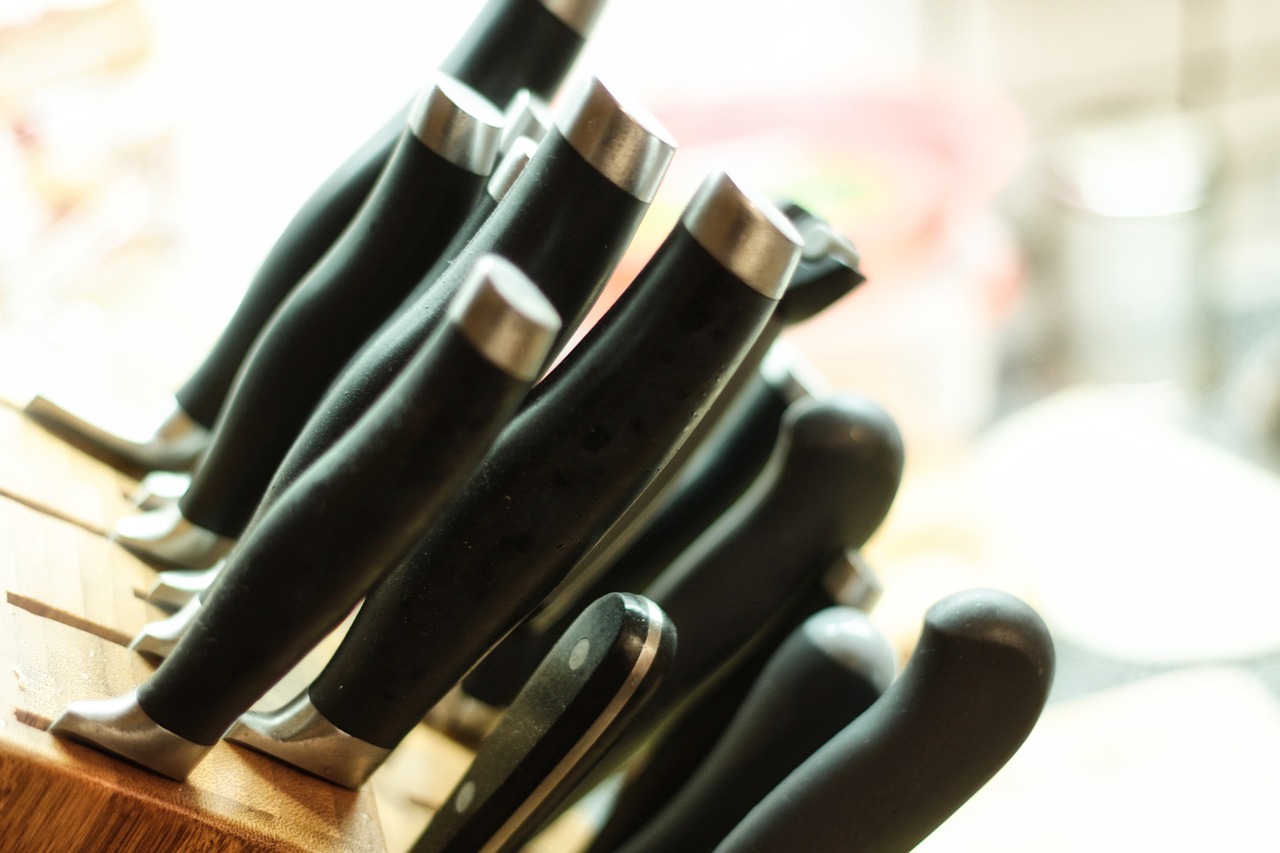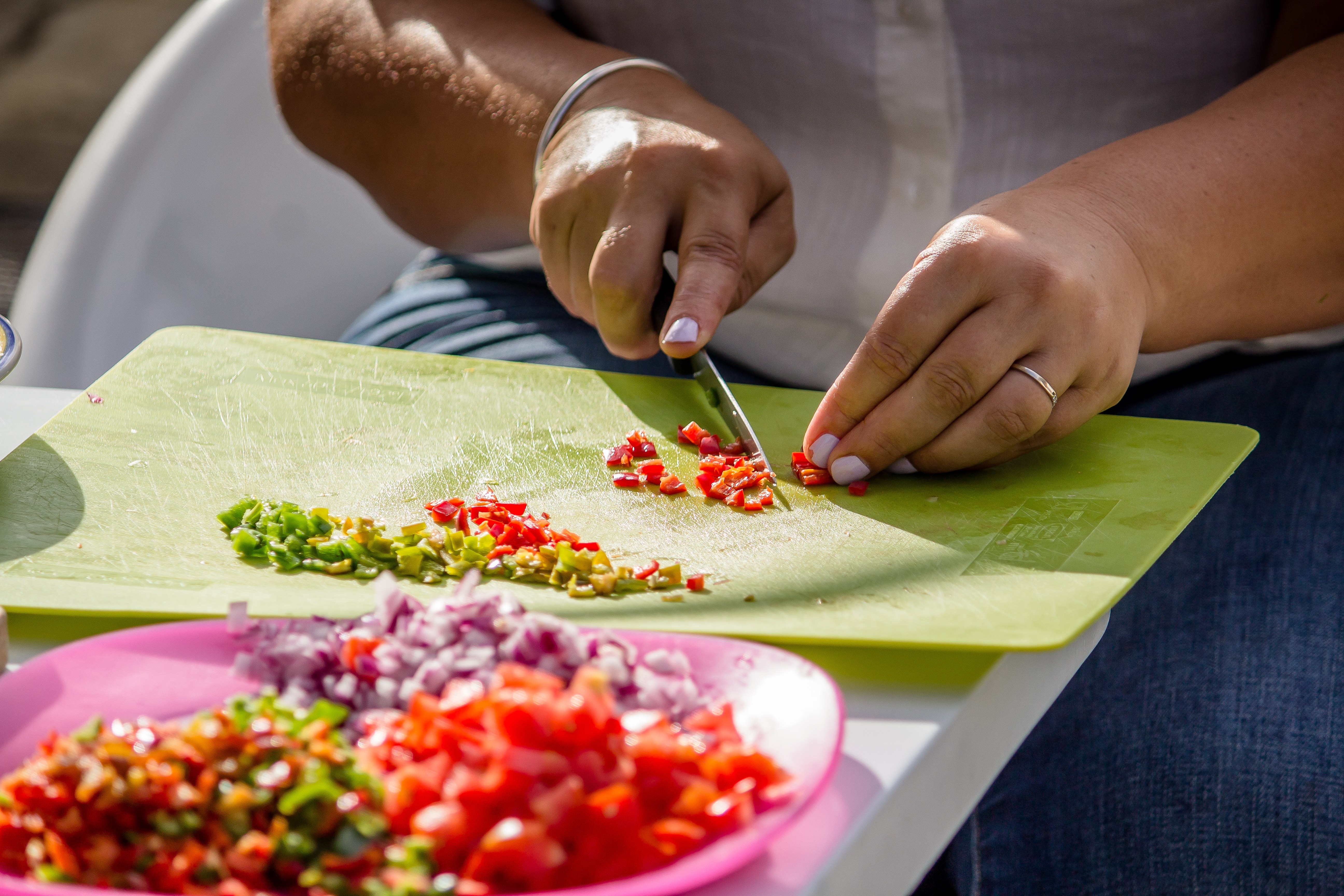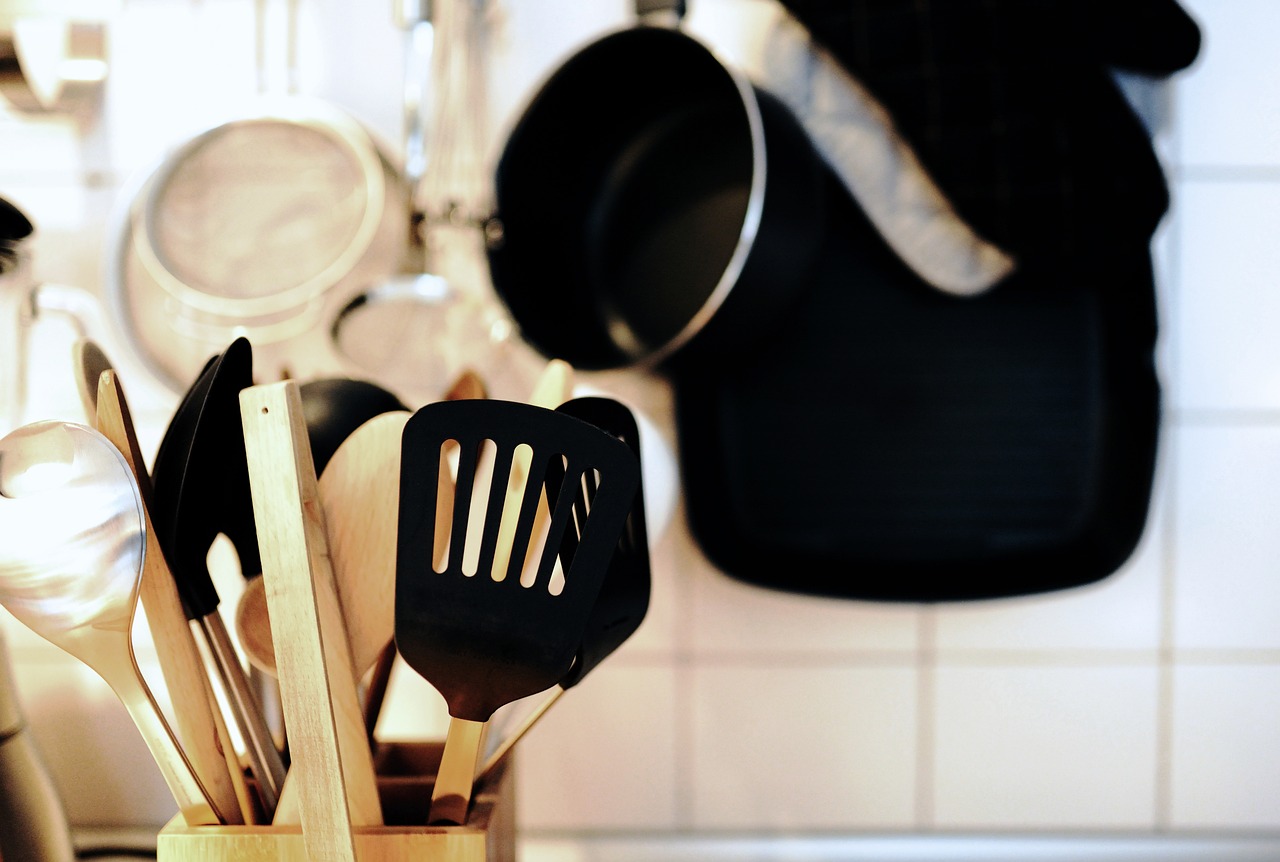Basic Tools for Every Kitchen
One of the reasons I love to cook is because, as far as hobbies go, it’s cost effective. We’re all eating food anyway, so why not invest some focused study and time into doing a great job of it? And if you have the right tools, then cooking just gets better and better.
However, if we’re not careful, cooking can be incredibly expensive. You might splurge on an expensive ingredient when a budget version would be just as good, or even worse, you might invest in some shiny new kitchen gear that you don’t actually need. This is a double loss. First, it can be very expensive. But second, when you realize you don’t actually need twelve different sizes of tupperware, you’ve already devoted one of your largest drawers to it, and now your kitchen is inefficient and disorganized. Bummer!
Luckily for you, I’ve spent a long time studying, testing, and investing in the right (and wrong) kitchen gear and I’ve identified the tools that every home cook should have (as well as some tools that maybe you should throw out).
This is a great article to get ready for Christmas. Maybe you know a new college student, a pair of newlyweds, or someone who just bought their first house. Or maybe you just want to return your own kitchen to the basics and make sure you have everything you need. No matter the case, scan this article for some ideas for your next kitchen improvement.

I put a good thermometer at the top of this list because there is no quicker way to level up your cooking than by learning how to precisely control the temperature of your food. A good thermometer is all that stands between you and the best chicken you’ve ever had.
To put it clearly, there is no replacement for a good thermometer. Poking the meat to check for doneness, cutting into it to check its color, setting a timer to estimate the cooking time, or “just winging it” are all unreliable, inconsistent, and wholly inferior.
The one I recommend only costs $17, and I’ve been using mine for the last six years.
(Note, none of this is paid advertising. I just want to point you in the right direction if you’re interested in any of these.)

Great news: you don’t actually need the All-Clad 32-piece cooking set before you can make an incredible roast chicken.
In fact, while a heavy dutch oven, good-quality cast-iron pan, and very large wok are certainly a great investment, you can get a lot done with just three pans.
Saucepan: The small pan for melting butter, making basic sauces, and cooking small quantities of rice.
Frying Pan: The wide, flat, shallow pan for searing, sauteing, and sizzling meats and veggies.
Stock Pot: The biggest pot you have for making incredible stocks, broths, and soups. I don’t see this as often as I wish I did, but plenty of us have an Instant Pot, which works just as well.

You don’t need twelve different knives. I get so incredibly annoyed every time I see an influencer peddling cheap knives. They take up a lot of valuable drawer space, and chances are you only use a few of them.
The way I’ve seen it in most home kitchens I visit, home chefs often have a big variety of knives—often up to twelve different knives—of which they only use two or three of them. They avoid the big knife, either because it’s scary or because it’s so dull that it’s now completely useless, and most of their daily knife work is with a long paring knife and serrated knife. I go to pains to explain to the people I love that taking good care of their chef’s knife would actually make their lives a lot easier, and maybe they’d start having a lot more fun in the kitchen.
Let’s break it down.
Chef’s Knife / Santoku: This is your work horse. Of every item in your kitchen, you should be most confident, comfortable, and consistent in picking up your chef’s knife. A really good chef’s knife will cost upwards of $200, but you’ll never have to purchase another knife in your life.
I’ve known far too many people who don’t cook with vegetables simply because they’re such a pain to chop up and use. If you invest in (or simply take care of your current) a good chef’s knife, vegetables are a breeze. Not only that, but trimming meat is quick and easy, and working with herbs and garnishes is tons of fun.
Your big knife is your best friend in the kitchen. Take care of it—get a good one (full tang, high-quality handle, durable steel) and keep it sharp—and it will take care of you.
Paring Knife: This is the tiny knife you need when the chef’s knife is just a wee bit too unwieldy. Your paring knife is NOT FOR CHOPPING! It’s for removing blemishes, skinning / peeling, and in many cases, working with fruit. I use a paring knife at most once a week (more like every other week), but I’m glad I have it.
Bread Knife: To be honest, a lot of us can mostly go without a bread knife. However, if you like to bake or buy fresh bread, a bread knife is a must. A clean serration and long blade is ideal for cutting through artisan loaves, especially those with a good, thick crust.
Random tip: whenever you’re cooking in someone else’s kitchen, consider using their bread knife. Most people don’t take good care of their knives, so their chef’s knife is dangerously dull, and paring knives are a pain to work with. But their bread knife? They’ve probably only used it a handful of times, and that serration will get the job done in a pinch when you need to slice tomatoes.

This is the chef’s anvil. You need at least one good one, but I recommend two—one for meat and one for vegetables so you don’t have to constantly wash the same cutting board while you cook.
Another tip: I suggest avoiding a wooden cutting board. In truth, wooden boards are the best—they last longer, are (often) anti-microbial, and are heavier, which makes them easier to work with. However, most of us don’t know how to care for a wooden cutting board, which makes it end up looking ugly and performing poorly.
If you don’t want to put in the work to maintain a wooden cutting board, just get a couple of synthetic cutting boards. Put a wet dish towel under them to keep them from slipping while you work, and you’ll be perfectly happy for years to come.

I feel like each of these points could have an article of its own, but let’s dig into another controversial suggestion:
Ditch your tupperware.
Seriously, it doesn’t treat you right. It makes all sorts of promises, but at the end of the day is never where it should be, takes up tons of space, and when you lose the proper lid for the uniquely shaped container, it’s useless. Then when we have a surplus of containers and only two lids, we think the solution is to go out and buy more tupperware?
The madness has to stop.
Just buy some takeout containers. They come in a handful of sizes, and they all have the same exact lid. They nest inside of one another, saving tons of space. And they’re cheap.
I bought a set of 48 takeout containers for fifteen bucks, and a month later I threw away all my tupperware. A year later my dad did the same thing.

Obviously a good kitchen has plenty of tools for handling food while it cooks. Are you like me, and you have not just a drawer crammed full of spatulas, whisks, and tongs, but also a utensil crock next to your stove that is crammed full of even more spatulas? If you need to downsize, or if you want to make sure you at least have the essentials, you can break this down into four major categories.
Metal: The strong, scrapy spatula perfect for flipping meat. These come in a variety of shapes and sizes, but you only really need one (maybe two if you do a lot of grilling).
Wood: The perfect cousin to a metal spatula. These are not as useful for flipping meats, but they should be your go-to for everything else. Personally, my square-headed, wooden spatula is my most-used utensil in the kitchen. Wood is important because it’s hard enough that it can effectively scrape the bottom of your pan and keep things from burning, but soft enough that it won’t scratch your pan the way a metal spatula would. Use a wooden spatula to keep creams and milk from burning, to deglaze seared meat, and to keep your brussel sprouts moving every couple of minutes.
Rubber: This spatula is mostly for baking and sauces. It’s mostly just for getting every last drop of goodness from your pot and into whatever vessel it’s going into next.
Tongs: For grabbing things. This doesn’t need much explanation. I use tongs often when working in the oven or when frying foods. They give you a degree of control that a metal spatula doesn’t. Plus, they’re the true hero when you’re making pasta, not the colander.
No whisks, ladles, or slotted spoons? If you have them, use them. However, a fork makes a fine whisk, a mug or measuring cup work perfectly fine as a ladle, and tongs are usually just as useful as a slotted spoon. I have nothing against the above tools (in fact, I love my tiny whisk), but there’s no need to panic if you don’t have them.Box Grater.
Mixing Bowls: Good for preparing doughs, batters, sauces, dressings, salads, creams, eggs, and more. You should own a mixing bowl (or a few) that you aren’t afraid to ding up. These are meant to be abused so you can avoid damaging your nicer bowls (like a salad bowl or soup bowl), and so you can apply the most work to your food. If you ever mix your salad on top of your plate, then you’re not getting the best salad.
Can Opener: It opens cans. Quite thrilling.
Strainer: There’s a difference between a colander and strainer, and both are useful. But if you’re just going to pick one, pick a strainer.
Pepper Mill: Last thing. Ditch the pre-ground pepper and get yourself a pepper mill. Pre-ground spices are the bane of good cooking.
However, if we’re not careful, cooking can be incredibly expensive. You might splurge on an expensive ingredient when a budget version would be just as good, or even worse, you might invest in some shiny new kitchen gear that you don’t actually need. This is a double loss. First, it can be very expensive. But second, when you realize you don’t actually need twelve different sizes of tupperware, you’ve already devoted one of your largest drawers to it, and now your kitchen is inefficient and disorganized. Bummer!
Luckily for you, I’ve spent a long time studying, testing, and investing in the right (and wrong) kitchen gear and I’ve identified the tools that every home cook should have (as well as some tools that maybe you should throw out).
This is a great article to get ready for Christmas. Maybe you know a new college student, a pair of newlyweds, or someone who just bought their first house. Or maybe you just want to return your own kitchen to the basics and make sure you have everything you need. No matter the case, scan this article for some ideas for your next kitchen improvement.
Thermometer

I put a good thermometer at the top of this list because there is no quicker way to level up your cooking than by learning how to precisely control the temperature of your food. A good thermometer is all that stands between you and the best chicken you’ve ever had.
To put it clearly, there is no replacement for a good thermometer. Poking the meat to check for doneness, cutting into it to check its color, setting a timer to estimate the cooking time, or “just winging it” are all unreliable, inconsistent, and wholly inferior.
The one I recommend only costs $17, and I’ve been using mine for the last six years.
(Note, none of this is paid advertising. I just want to point you in the right direction if you’re interested in any of these.)
Pots and Pans

Great news: you don’t actually need the All-Clad 32-piece cooking set before you can make an incredible roast chicken.
In fact, while a heavy dutch oven, good-quality cast-iron pan, and very large wok are certainly a great investment, you can get a lot done with just three pans.
Saucepan: The small pan for melting butter, making basic sauces, and cooking small quantities of rice.
Frying Pan: The wide, flat, shallow pan for searing, sauteing, and sizzling meats and veggies.
Stock Pot: The biggest pot you have for making incredible stocks, broths, and soups. I don’t see this as often as I wish I did, but plenty of us have an Instant Pot, which works just as well.
Knives

You don’t need twelve different knives. I get so incredibly annoyed every time I see an influencer peddling cheap knives. They take up a lot of valuable drawer space, and chances are you only use a few of them.
The way I’ve seen it in most home kitchens I visit, home chefs often have a big variety of knives—often up to twelve different knives—of which they only use two or three of them. They avoid the big knife, either because it’s scary or because it’s so dull that it’s now completely useless, and most of their daily knife work is with a long paring knife and serrated knife. I go to pains to explain to the people I love that taking good care of their chef’s knife would actually make their lives a lot easier, and maybe they’d start having a lot more fun in the kitchen.
Let’s break it down.
Chef’s Knife / Santoku: This is your work horse. Of every item in your kitchen, you should be most confident, comfortable, and consistent in picking up your chef’s knife. A really good chef’s knife will cost upwards of $200, but you’ll never have to purchase another knife in your life.
I’ve known far too many people who don’t cook with vegetables simply because they’re such a pain to chop up and use. If you invest in (or simply take care of your current) a good chef’s knife, vegetables are a breeze. Not only that, but trimming meat is quick and easy, and working with herbs and garnishes is tons of fun.
Your big knife is your best friend in the kitchen. Take care of it—get a good one (full tang, high-quality handle, durable steel) and keep it sharp—and it will take care of you.
Paring Knife: This is the tiny knife you need when the chef’s knife is just a wee bit too unwieldy. Your paring knife is NOT FOR CHOPPING! It’s for removing blemishes, skinning / peeling, and in many cases, working with fruit. I use a paring knife at most once a week (more like every other week), but I’m glad I have it.
Bread Knife: To be honest, a lot of us can mostly go without a bread knife. However, if you like to bake or buy fresh bread, a bread knife is a must. A clean serration and long blade is ideal for cutting through artisan loaves, especially those with a good, thick crust.
Random tip: whenever you’re cooking in someone else’s kitchen, consider using their bread knife. Most people don’t take good care of their knives, so their chef’s knife is dangerously dull, and paring knives are a pain to work with. But their bread knife? They’ve probably only used it a handful of times, and that serration will get the job done in a pinch when you need to slice tomatoes.
Cutting Boards

This is the chef’s anvil. You need at least one good one, but I recommend two—one for meat and one for vegetables so you don’t have to constantly wash the same cutting board while you cook.
Another tip: I suggest avoiding a wooden cutting board. In truth, wooden boards are the best—they last longer, are (often) anti-microbial, and are heavier, which makes them easier to work with. However, most of us don’t know how to care for a wooden cutting board, which makes it end up looking ugly and performing poorly.
If you don’t want to put in the work to maintain a wooden cutting board, just get a couple of synthetic cutting boards. Put a wet dish towel under them to keep them from slipping while you work, and you’ll be perfectly happy for years to come.
Leftover Storage

I feel like each of these points could have an article of its own, but let’s dig into another controversial suggestion:
Ditch your tupperware.
Seriously, it doesn’t treat you right. It makes all sorts of promises, but at the end of the day is never where it should be, takes up tons of space, and when you lose the proper lid for the uniquely shaped container, it’s useless. Then when we have a surplus of containers and only two lids, we think the solution is to go out and buy more tupperware?
The madness has to stop.
Just buy some takeout containers. They come in a handful of sizes, and they all have the same exact lid. They nest inside of one another, saving tons of space. And they’re cheap.
I bought a set of 48 takeout containers for fifteen bucks, and a month later I threw away all my tupperware. A year later my dad did the same thing.
Spatulas

Obviously a good kitchen has plenty of tools for handling food while it cooks. Are you like me, and you have not just a drawer crammed full of spatulas, whisks, and tongs, but also a utensil crock next to your stove that is crammed full of even more spatulas? If you need to downsize, or if you want to make sure you at least have the essentials, you can break this down into four major categories.
Metal: The strong, scrapy spatula perfect for flipping meat. These come in a variety of shapes and sizes, but you only really need one (maybe two if you do a lot of grilling).
Wood: The perfect cousin to a metal spatula. These are not as useful for flipping meats, but they should be your go-to for everything else. Personally, my square-headed, wooden spatula is my most-used utensil in the kitchen. Wood is important because it’s hard enough that it can effectively scrape the bottom of your pan and keep things from burning, but soft enough that it won’t scratch your pan the way a metal spatula would. Use a wooden spatula to keep creams and milk from burning, to deglaze seared meat, and to keep your brussel sprouts moving every couple of minutes.
Rubber: This spatula is mostly for baking and sauces. It’s mostly just for getting every last drop of goodness from your pot and into whatever vessel it’s going into next.
Tongs: For grabbing things. This doesn’t need much explanation. I use tongs often when working in the oven or when frying foods. They give you a degree of control that a metal spatula doesn’t. Plus, they’re the true hero when you’re making pasta, not the colander.
No whisks, ladles, or slotted spoons? If you have them, use them. However, a fork makes a fine whisk, a mug or measuring cup work perfectly fine as a ladle, and tongs are usually just as useful as a slotted spoon. I have nothing against the above tools (in fact, I love my tiny whisk), but there’s no need to panic if you don’t have them.Box Grater.
Other useful Things
None of the next items take much explanation, so I’m throwing them all under the same heading.Mixing Bowls: Good for preparing doughs, batters, sauces, dressings, salads, creams, eggs, and more. You should own a mixing bowl (or a few) that you aren’t afraid to ding up. These are meant to be abused so you can avoid damaging your nicer bowls (like a salad bowl or soup bowl), and so you can apply the most work to your food. If you ever mix your salad on top of your plate, then you’re not getting the best salad.
Can Opener: It opens cans. Quite thrilling.
Strainer: There’s a difference between a colander and strainer, and both are useful. But if you’re just going to pick one, pick a strainer.
Pepper Mill: Last thing. Ditch the pre-ground pepper and get yourself a pepper mill. Pre-ground spices are the bane of good cooking.
 Matthew Christensen
Matthew Christensen
Weekly Newsletter Contributor since 2023
Email the author! matthew@dvo.com
